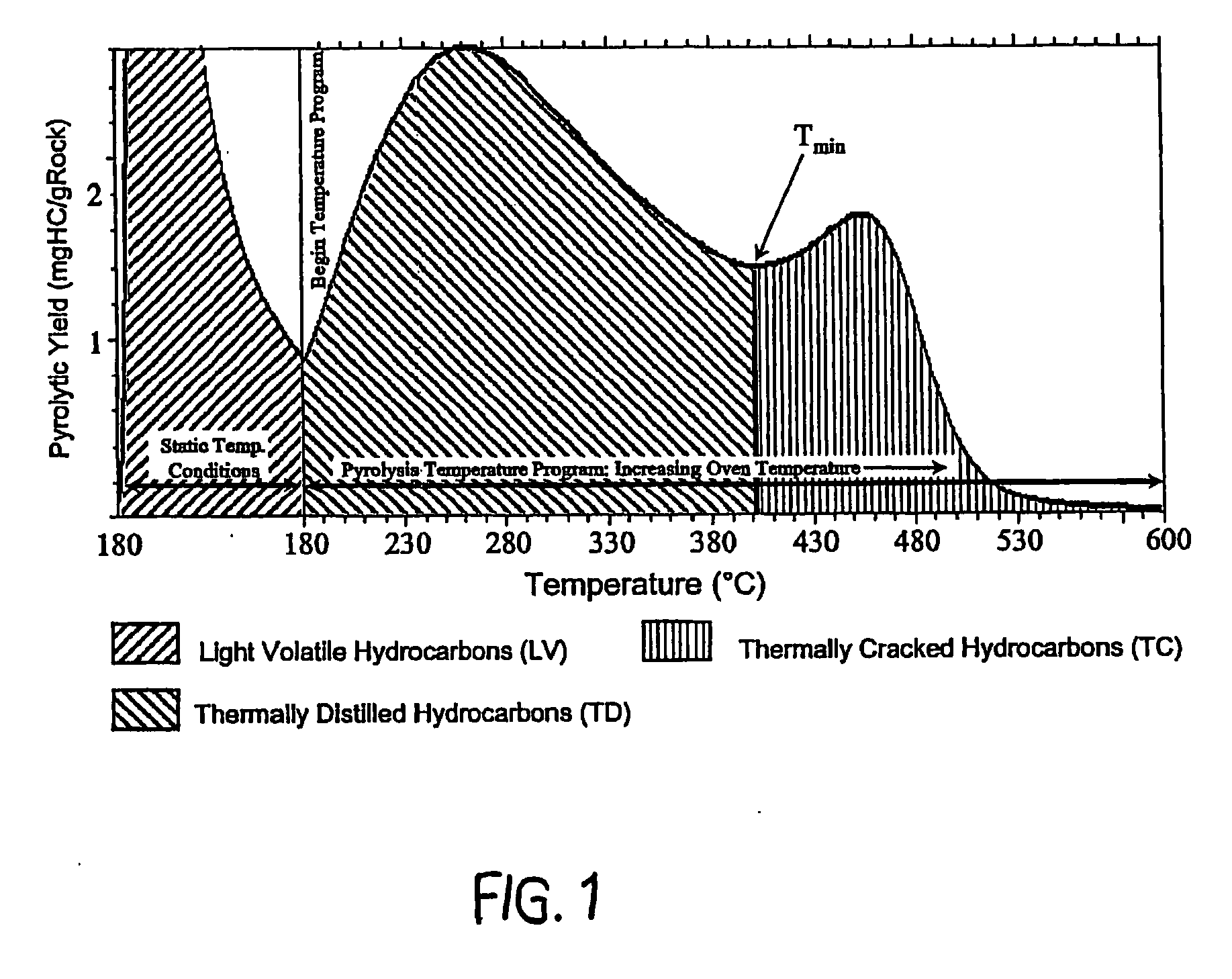Method for determining volume of organic matter in reservoir rock
a reservoir rock and organic matter technology, applied in the field of geochemical analysis of reservoir rock samples, can solve problems such as the effect of characterizing organic matter, and achieve the effects of simple and robust analytical techniques, quick and effective, and quick and inexpensive application
- Summary
- Abstract
- Description
- Claims
- Application Information
AI Technical Summary
Benefits of technology
Problems solved by technology
Method used
Image
Examples
Embodiment Construction
[0056]The methods employed in steps 1-3 above are the same as those described in U.S. Pat. Nos. 5,866,814 and 6,823,298, and will not be further described here. A detailed description of the remaining steps employed in the practice of the VOM method of the invention are provided below.
Determination of Physical and Chemical Properties of End-Members
[0057]The compositional modeling (CoMod) method is effective for determining the percentage of various organic end-members in the total mixture of hydrocarbons in a sample as determined by pyrolysis. However, in order to predict the volume of tar and pyrobitumen in oil reservoirs, the results from CoMod must be combined with relationships that allow the total weight or volume of material to be determined based on the weight of the hydrocarbon portion as indicated by the FID of the pyrolysis instrument.
[0058]Organic matter, such as oil, tar, pyrobitumen, kerogen, and the like found in petroleum systems is typically composed of “pure” hydroc...
PUM
 Login to View More
Login to View More Abstract
Description
Claims
Application Information
 Login to View More
Login to View More - R&D
- Intellectual Property
- Life Sciences
- Materials
- Tech Scout
- Unparalleled Data Quality
- Higher Quality Content
- 60% Fewer Hallucinations
Browse by: Latest US Patents, China's latest patents, Technical Efficacy Thesaurus, Application Domain, Technology Topic, Popular Technical Reports.
© 2025 PatSnap. All rights reserved.Legal|Privacy policy|Modern Slavery Act Transparency Statement|Sitemap|About US| Contact US: help@patsnap.com



